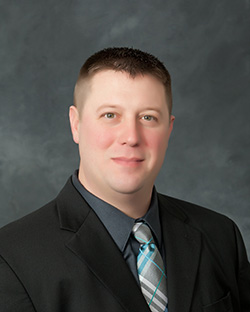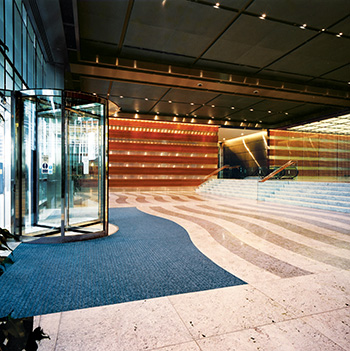 The Cradle to Cradle Certified Program has been integrated into the U.S. Green Building Council’s (USGBC) new LEED Version 4 rating system, which will be rolled out next month. The new system will give one LEED point to buildings that use a minimum of 20 Cradle to Cradle-certified products. This new inclusion in the rating system means that more manufacturing companies are taking a closer look at Cradle to Cradle certification, which focuses on material health, material reutilization, renewable energy water stewardship and social fairness.
The Cradle to Cradle Certified Program has been integrated into the U.S. Green Building Council’s (USGBC) new LEED Version 4 rating system, which will be rolled out next month. The new system will give one LEED point to buildings that use a minimum of 20 Cradle to Cradle-certified products. This new inclusion in the rating system means that more manufacturing companies are taking a closer look at Cradle to Cradle certification, which focuses on material health, material reutilization, renewable energy water stewardship and social fairness.
Green Building News spoke with Curt Fessler, marketing director, LEED AP BD+C at Muncy, Pa.-based Construction Specialties, a manufacturer that focuses heavily on sustainable products and has more than 39 Cradle to Cradle-certified products in its portfolio. Fessler discussed what LEED v4 will mean for the future of product manufacturing in the green building market.
Q: When did Construction Specialties start making environmentally healthy materials a priority?
Fessler: We’ve been an USGBC member since 2000, and the environmental health connection started for us back in 1995. There was a hazardous waste incinerator that was trying to get zoning approved about 15 miles from our plant in central Pennsylvania. We banded together and joined with other community organizations to ban this burner so that it wouldn’t be sited in our community. It was a bittersweet victory because we won, but we came to the stark realization that it would be cited in someone else’s community. That begged the questions of why do we have these hazardous chemicals in the first place, why haven’t we replaced them and why haven’t we optimized them out of our products? U.S. chemical legislation has never really done anything, especially in consumer products, to protect the population from some of the products that are commonly used in building materials. Our story started back then and it has continued.
Q: How has Construction Specialties kept up with LEED standards and how will it incorporate LEED v4 in the future?
Fessler: We’re so incredibly happy to see LEED take the steps they’re taking towards Version 4. In the first three versions of LEED, the materials and resources credits were very much focused around recycled content, sourcing of regional materials, FCC-certified woods and indoor environmental quality issues. They were all almost line-item considerations; none of them looked at the total impact of the product. Something we’ve said before and something that was started by the Green Guide for Health Care (a health care precursor to LEED v4) is the tagline: “Imagine cancer centers built without materials linked to cancer.” In the design of Dell Children’s Medical Center of Central Texas, one of the design goals we helped accomplish was to have environmental benefits to help the community as well as to help those who come in contact with the building. They are the most sensitive subsets of our population. We should be especially careful with educational facilities and health care facilities with the products we’re putting in there.
 LEED v4 is finally starting to look at that lifecycle approach — not just a couple of individual factors of a product’s sustainability but finally starting to look more towards what is in the product. If we look at the new credit for materials and resources credit 4, which is material building product closure and optimization, there are two parts. Option one asks if the manufacturer even knows what’s in the product, while option two questions if the manufacturer has done anything to optimize out those chemicals. That begins to look at a much more holistic manner and takes into consideration not just the products being used in a facility, but it looks at the whole lifecycle: extraction, processing and the chemical makeup. We love the idea of Cradle to Cradle in which the material is designed to go back into a biological or nutrient cycle instead of a landfill.
LEED v4 is finally starting to look at that lifecycle approach — not just a couple of individual factors of a product’s sustainability but finally starting to look more towards what is in the product. If we look at the new credit for materials and resources credit 4, which is material building product closure and optimization, there are two parts. Option one asks if the manufacturer even knows what’s in the product, while option two questions if the manufacturer has done anything to optimize out those chemicals. That begins to look at a much more holistic manner and takes into consideration not just the products being used in a facility, but it looks at the whole lifecycle: extraction, processing and the chemical makeup. We love the idea of Cradle to Cradle in which the material is designed to go back into a biological or nutrient cycle instead of a landfill.
Q: What key factors do you have to consider when designing materials that qualify for Cradle to Cradle certification?
Fessler: We have been partnered with McDonough Braungart Design Chemistry, which is our Cradle to Cradle assessor. Cradle to Cradle is now a third-party, multi-attribute product certification, and LEED is finally acknowledging its value. It is something we’ve been doing since 2007. We always look into the material chemistry of new products and even on our existing products. We work with them to go back through our supply chain. Whether a product has two, 10 or 20 components in it, we have to look back and see what chemical composition is in this product. It takes a lot of work to get one product Cradle to Cradle certified because it requires going all the way back to the raw material. We’re looking for carcinogens and all of these common materials found in construction and building products these are all linked to cancer or birth defects. Cradle to Cradle is what we look at when we’re designing products or even looking at past materials. I think it’s a really unique certification and I’m honored to see it in LEED and to see LEED start embracing this way of thinking.
Q: What do you hope the LEED v4 standards will bring to the future of green building?
Fessler: I’m hoping it will continue to do what LEED has always done and raise the bar and shed light on sustainability topics in the built environment that we didn’t have an understanding of before LEED. It has been a market driver like no other; the sustainability movement is the biggest movement since the personal computer movement. I love that LEED is embracing this MR Credit 4 and I think that will push the industry to build sustainably — not just for the environment, but for the people. I’m starting to see more of a people connection in the ranking system. If for nothing else, aren’t people the reason we do everything?

